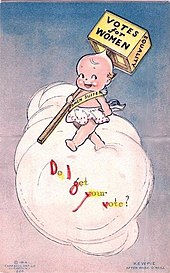The 1st of May
- Penny Colman
- May 1, 2023
- 3 min read
Happy May 1, or in many countries—International Workers’ Day!
Here are three landmarks to women workers from my archives: (1) Homage to Women in honor of mill workers by sculptor Mico Kaufman located in Market Mill Park, Lowell, Massachusetts, unveiled on October 26, 1984; (2) The Leicester Seamstress in honor of

hosiery makers by sculptor James Butler, located in Leicester, England, unveiled on June 29, 1990; and (3) Cracker Packers in honor of biscuit makers by sculptor Hazel Reeves, located near the

Carr's Table Water Biscuit factory in Carlisle, England, unveiled in March 8, 2018. The first two landmarks are unusual in that they were erected long before the recent scramble (largely prompted by the 2020 Centennial of the 19th Amendment) to represent women with landmarks in public spaces. The third landmark is unusual in that it represents women workers and was sculpted by a woman.

Linda and I visited the Cracker Packers during our 2019 "In the Footsteps of Suffragettes" road trip in England and Scotland. We walked and walked, making several wrong turns, before finding the statue representing two women workers, one from the past and the other from the present, atop a giant Carr’s Table Water Biscuit. The two women are engaged in “story telling and happy chatter,” according to sculptor Hazel Reeves. On that same trip, we stopped in Leicester, to visit the statue representing suffragette Alice Hawkins and serendipitously discovered The Leicester Seamstress.
I have given several talks in Lowell, Massachusetts, including one in 1999 when I gave a lecture at the Tsongas History Learning Center based on my book Rosie the Riveter: Women Working on the Home Front in World War II. In 2018, I gave a talk in the Moses Greeley Parker Lecture Series based on my book Elizabeth Cady Stanton and Susan B. Anthony: A Friendship that Changed the World.
(Also in my archives, I discovered the description for that talk: "An intimate portrait of Elizabeth Cady Stanton, a controversial thinker, and Susan B. Anthony, an indefatigable organizer, whose legendary friendship fueled and sustained the nineteenth-century fight for women’s rights. They waged this fight despite entrenched opposition, daunting conditions, scandalous entanglements, and betrayal by their allies. Their friendship lasted fifty-one years, and, as Susan once wrote they were 'busy through every one of them stirring up the world to recognize the rights of women.' They didn’t always agree, and, at times, they were at odds. Nevertheless, Elizabeth once wrote, 'Nothing that Susan could say or do could break my friendship with her and I know nothing could uproot her affection for me.'”)
In 2012, we had driven to Maine to celebrate Linda's birthday. On the way home, we stopped in Lowell and visited the Boott Cotton Mill and Museum, part of the Lowell National Historical Park. It was Linda's first visit, and it had particular relevance for her. She herself had once worked as a timekeeper in a factory, and her grandmother, Josephine Batastini, was a weaver in the Skinner Silk Mill and American Thread Company. After the companies relocated to the South, Josephine worked in a Kewpie doll factory.

(Rose O'Neill, an ardent suffragist,

cartoonist, illustrator, and writer, created

the comic strip characters Kewpies in 1909. They were manufactured as dolls in 1912. ) With imperfect parts slyly salvaged from the discard bin, Josephine, with assists from her friends, reassembled a Kewpie doll for Linda. "It was fun!" Linda remembers.
Left image R-L: Josephine Batastini wearing an elegant apron, her friend Margaret Zahn,*and Linda, age 6, with her cat Smoky.
Right image: 1914 Kewpie suffrage postcard. Last image, R-L: Linda, age 6, with her Kewpie doll.** Her cousin Joanne, age 4, with another type of doll. Top images: Linda took the photo of me with Homage to Women in 2012. In 2019, I photographed the other landmarks.
Notes: *During World War II, Josephine Batastini befriended Margaret Zahn who was being shunned by other workers because she was German.
**The original Kewpie was a bisque doll, or porcelain doll, Linda's doll was most likely made from hard plastic.



Comments